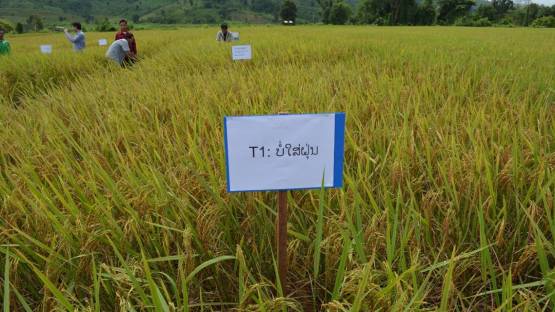Rice, the main staple crop in the Lao People’s Democratic Republic (PDR), is key to food security and employment. Over 80 per cent of the country’s farmers grow rice, which takes up about 60 per cent of the cultivated area in the country. However, Lao PDR’s mountainous topography, tropical climate with frequent monsoons, soil erosion, lack of suitable rice varieties combined with insufficient use of fertilizers has limited rice yields, threatening livelihoods in this agrarian society. Since 72 per cent of the rice-growing area in the country is dependent on natural rainfall, increasingly variable rainfall patterns under changing climate are predicted to have a devastating impact on rice production.
The IAEA, in cooperation with the Food and Agriculture Organization of the United Nations (FAO), has supported farmers in Lao PDR to increase rice yields by 60 per cent through better soil and nutrient management practices identified using nuclear techniques (see Stable isotope techniques). Trials conducted on farmers’ fields showed that by applying chemical fertilizers and manure in an optimized way, rice yields have increased from 3.16 to 5.1 tonnes per hectare.
“I have been applying the practices for three years,” said Somphet Siphandone, a farmer in Sanakarm district, Vientiane province, who is involved in a pilot project putting into practice the scientific findings obtained using nuclear techniques. “My yield has increased 60 per cent compared to our traditional practice. We were introduced to efficient and effective agricultural techniques through the trainings, and they performed well in our fields. Thanks to the programme, we are more resistant to the climate and we are harvesting more.”








